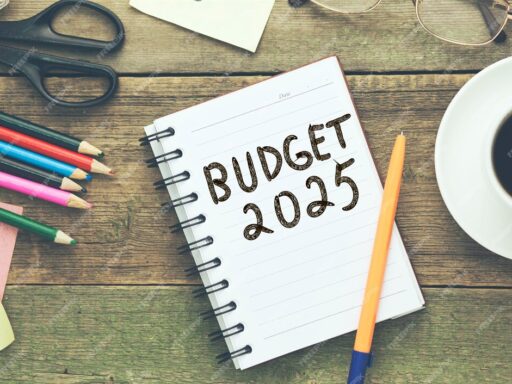
Picture this: It’s the end of the month, and you’re staring at your bank account, wondering where all your money went. That coffee shop habit? Those sneaky subscriptions you forgot to cancel? Or maybe that “one-time” splurge that somehow became a monthly tradition? I’ve been there, and it’s a wake-up call that hits like a cold shower. A few years ago, I found myself scrambling to figure out why I was always short on cash despite earning a decent income. That’s when I discovered the magic of a monthly expense tracker spreadsheet—a simple, free tool that transformed my financial chaos into clarity. In this guide, I’ll walk you through everything you need to know about using a free monthly expense tracker spreadsheet in 2025, from why it’s a game-changer to how to make it work for you. Whether you’re a budgeting newbie or a seasoned saver, this post is packed with insights, tips, and free resources to help you take control of your finances.
Why Track Your Expenses? The Power of Knowing Your Money’s Story
Let’s start with a hard truth: you can’t manage what you don’t measure. As financial expert Douglas A. Boneparth told the New York Times, “It’s very hard to make changes unless you actually know what you’re spending money on.” Tracking your expenses isn’t just about numbers; it’s about understanding the story your money tells. Are you investing in experiences that bring you joy, like weekend getaways, or are you leaking cash on things you barely notice, like unused gym memberships? A monthly expense tracker spreadsheet gives you a clear, organized snapshot of your spending habits, helping you make informed decisions.
For me, the turning point came when I realized I was spending $150 a month on takeout coffee. That’s $1,800 a year—enough for a dream vacation! By using a spreadsheet to track my expenses, I could see exactly where my money was going and make intentional choices to redirect it toward my goals. In 2025, with inflation and living costs still fluctuating, tools like these are more essential than ever. According to NerdWallet, tracking expenses is the foundation of any solid financial plan, whether you’re paying off debt, saving for a house, or just trying to avoid living paycheck to paycheck.
Benefits of Using a Monthly Expense Tracker Spreadsheet
- Clarity: See exactly where your money goes each month, from rent to Netflix subscriptions.
- Control: Identify overspending and adjust before it becomes a problem.
- Goal Setting: Allocate funds toward savings, investments, or big purchases.
- Flexibility: Customize spreadsheets to fit your unique financial situation.
- Accessibility: Free templates are available online, and you can access them anywhere via platforms like Google Sheets.
What Makes a Great Monthly Expense Tracker Spreadsheet?
Not all spreadsheets are created equal. A good expense tracker should be intuitive, customizable, and easy to maintain. ClickUp emphasizes that a great template needs clearly defined categories, such as fixed costs (rent, utilities) and variable costs (dining out, entertainment), with sub-categories for deeper insights. It should also include features like automated calculations to save time and visual dashboards for quick analysis. When I started, I was overwhelmed by complex templates with too many bells and whistles. I learned that simplicity is key—especially if you’re new to budgeting.
Think of your spreadsheet as a financial diary. It should reflect your lifestyle and priorities. For example, if you’re a freelancer with irregular income, you’ll want a template that tracks variable earnings, like the one from Excelx. If you’re managing a household, you might prefer a template with categories for family expenses, like those offered by Vertex42. The best part? Most of these templates are free, customizable, and compatible with Excel or Google Sheets, making them accessible on your phone or laptop.
Top Free Monthly Expense Tracker Spreadsheets for 2025
The internet is brimming with free templates, but sifting through them can feel like searching for a needle in a haystack. Based on my research and personal experience, here are some of the best free monthly expense tracker spreadsheets for 2025, each with unique features to suit different needs.
Comparison Table: Top Free Monthly Expense Tracker Spreadsheets
| Template Name | Platform | Key Features | Best For | Source |
|---|---|---|---|---|
| Tiller Spending Trends Dashboard | Google Sheets/Excel | Auto-imports transactions, customizable categories, spending trends visualization | Tech-savvy users who want automation | Tiller |
| Google Sheets Native Monthly Budget | Google Sheets | Simple interface, monthly/annual views, 50/30/20 budgeting option | Beginners and households | Google Sheets |
| Vertex42 Personal Budget | Excel | Detailed categories, budget vs. actual spending, printable | Small businesses and detailed trackers | Vertex42 |
| Part-Time Money Monthly Tracker | Excel | Simple design, daily expense tracking, balance prediction | Minimalists and beginners | Part-Time Money |
| NerdWallet 50/30/20 Budget | Excel/Apple Numbers | Follows 50/30/20 rule, prompts for comprehensive expense categories | Budgeters aiming for simplicity | NerdWallet |
Why These Templates Stand Out
- Tiller Spending Trends Dashboard: This template is a game-changer for those who hate manual data entry. It syncs with your bank accounts to automatically import transactions, saving you time. It’s perfect for those who want a hands-off approach but still need detailed insights.
- Google Sheets Native Monthly Budget: Built into Google Sheets, this template is user-friendly and ideal for beginners. It includes a dashboard to track income and expenses by category, and you can share it with family members for collaborative budgeting.
- Vertex42 Personal Budget: Known for its robust templates, Vertex42 offers a comprehensive spreadsheet with categories for everything from childcare to travel. It’s great for small business owners or anyone who loves diving into the details.
- Part-Time Money Monthly Tracker: This no-frills template is perfect for those who want simplicity. It breaks down expenses by day, making it easy to predict your balance throughout the month.
- NerdWallet 50/30/20 Budget: Based on the popular 50/30/20 budgeting rule (50% needs, 30% wants, 20% savings/debt), this template helps you allocate your income strategically. It’s ideal for those new to budgeting or looking to simplify their approach.
How to Use a Monthly Expense Tracker Spreadsheet: A Step-by-Step Guide
Ready to get started? Here’s a step-by-step guide to using a monthly expense tracker spreadsheet, based on my own trial-and-error journey and insights from experts.
Step 1: Choose and Download a Template
Pick a template that matches your needs. If you’re tech-savvy and want automation, try Tiller’s template. For a simple start, go with Google Sheets’ native budget or Part-Time Money’s tracker. Download from a trusted source like Microsoft Create or Smartsheet to avoid scams or malware.
Step 2: Customize Your Categories
Most templates come with predefined categories, but you’ll want to tailor them to your life. For example, I added a “Pet Expenses” category for my dog’s treats and vet bills. Common categories include:
- Fixed Expenses: Rent/mortgage, utilities, insurance
- Variable Expenses: Groceries, dining out, entertainment
- Savings/Debt: Emergency fund, credit card payments, investments
- Miscellaneous: Gifts, hobbies, one-off purchases
Step 3: Input Your Income and Expenses
Start by entering your monthly income—salary, freelance gigs, or side hustles. Then, log your expenses as they occur. I found it helpful to set aside 10 minutes each evening to update my spreadsheet. If you’re using an automated template like Tiller’s, connect it to your bank for seamless updates.
Step 4: Analyze and Adjust
At the end of the month, review your spending. Are you overspending on dining out? Under-saving for your goals? Use the spreadsheet’s charts or summaries to spot trends. For example, my spreadsheet’s pie chart showed I was spending 40% of my income on “wants” instead of the recommended 30%. That insight helped me cut back and redirect funds to my savings.
Step 5: Maintain Consistency
The key to success is consistency. Update your spreadsheet regularly—daily or weekly works best. As Tiller suggests, spending a few minutes each day categorizing transactions can prevent a backlog and keep your budget on track.
Personal Anecdote: How a Spreadsheet Saved My Financial Sanity
Let me share a quick story. In 2023, I was juggling a full-time job and a side hustle, but I still felt broke. I downloaded a free Google Sheets template and started tracking every penny. The first month was eye-opening—I was spending $200 on subscriptions I barely used! By canceling a few and redirecting that money to my emergency fund, I saved $1,200 in a year. That spreadsheet wasn’t just a tool; it was a lifeline. It showed me I could enjoy life without overspending, and it gave me the confidence to set bigger goals, like saving for a down payment.
Advanced Tips for Maximizing Your Expense Tracker
Once you’ve mastered the basics, take your spreadsheet to the next level with these expert tips:
- Use Conditional Formatting: Highlight overspending in red or savings goals in green to make trends pop. Excel and Google Sheets have built-in tools for this.
- Integrate with Apps: Pair your spreadsheet with apps like Mint or Tiller for automated transaction imports.
- Set Alerts: Some templates, like monday.com’s, allow you to set reminders for bill payments or budget overruns.
- Track Trends Over Time: Use annual budget templates to compare monthly spending and spot seasonal patterns, like holiday overspending.
- Backup Your Data: Use Excel’s AutoRecover or Google Sheets’ cloud saving to protect your data from loss.
Common Mistakes to Avoid
Even with the best spreadsheet, it’s easy to slip up. Here are pitfalls to watch out for:
- Inconsistent Updates: Skipping a few days can throw off your entire budget. Set a daily reminder to stay on track.
- Overcomplicating Categories: Too many categories can make tracking overwhelming. Start with 5–10 broad ones and refine as needed.
- Ignoring Small Expenses: That $5 coffee might seem minor, but it adds up. Log every transaction, no matter how small.
- Not Reviewing: Tracking is useless if you don’t analyze. Schedule a monthly review to adjust your spending.
FAQ: Your Burning Questions About Monthly Expense Tracker Spreadsheets
What’s the best free expense tracker spreadsheet for beginners?
The Google Sheets Native Monthly Budget is ideal for beginners due to its simplicity and built-in dashboard. It’s free, accessible, and easy to customize. Alternatively, NerdWallet’s 50/30/20 Budget is great for those new to budgeting principles.
Can I use a spreadsheet for business expenses?
Absolutely! Templates like Vertex42’s Personal Budget or monday.com’s Business Expense Tracker are designed for small businesses, with categories for travel, supplies, and more. They also help with tax preparation by organizing deductible expenses.
How do I automate my expense tracking?
Use a service like Tiller to connect your bank accounts to your spreadsheet for automatic transaction imports. Alternatively, manually import CSV files from your bank into Google Sheets or Excel, as outlined by SoftwareKeep.
Are there printable expense trackers?
Yes, many templates, like those from Vertex42, are printable. You can also find PDF versions on sites like Consumer.gov for those who prefer pen-and-paper tracking.
How often should I update my spreadsheet?
Daily or weekly updates work best to stay accurate. Tiller suggests spending a few minutes each day categorizing transactions to avoid a backlog.
Can I share my spreadsheet with my family?
Google Sheets templates are great for sharing. You can grant access to family members to collaborate on household budgets, as noted by NerdWallet.
Conclusion: Take Charge of Your Finances in 2025
Using a free monthly expense tracker spreadsheet is like having a financial GPS—it shows you where you are, where you’re going, and how to course-correct if you’re off track. Whether you’re trying to pay off debt, save for a big goal, or simply understand your spending habits, these tools offer clarity and control without breaking the bank. My own journey with expense tracking taught me that small changes—like cutting back on takeout or canceling unused subscriptions—can lead to big wins, like saving thousands of dollars a year.
In 2025, with economic uncertainty lingering, there’s no better time to start tracking your expenses. Download a free template from trusted sources like Google Sheets, Vertex42, or Tiller, and customize it to fit your life. Commit to updating it regularly, review your spending monthly, and don’t be afraid to tweak your approach as you learn what works. Your future self—whether it’s the one enjoying a debt-free life or sipping coffee on a dream vacation—will thank you.
Ready to take the first step? Pick a template, start tracking, and watch your financial confidence soar. What’s one expense you’re curious to track this month? Let that curiosity guide you to a brighter financial future.


